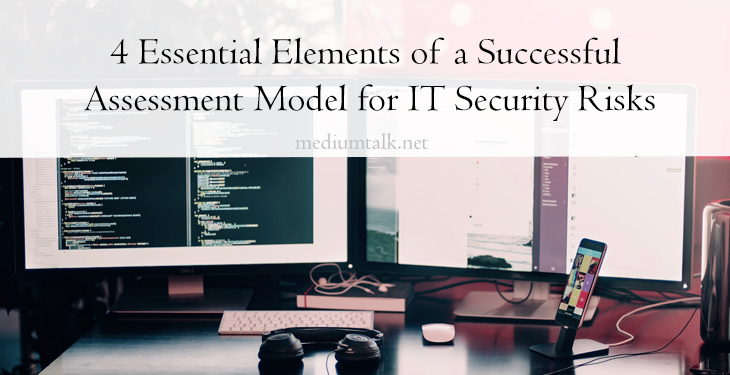Four Essential Elements of a Successful Security Risk Assessment Model
A cyber-security risk assessment is an important element of any IT security program. However, as technology evolves, making sure that your company’s data isn’t susceptible to potential threats has become challenging.

So, how do you evaluate your corporate’s vulnerability level? Where do you start? In this article, I’ll explain the essential elements that your IT security risks model should have and provide additional information about the best security assessment services. Read on to discover more.
Prevention, mitigation, assessment and identification are all important parts of any security risk assessment model. Here are more details.
Identification
You need to understand all the components of your software as well as the supply chain that built it. That’s important since breaches can take place at any given point.
You also need to identify all of your system assets. For example, you need to know the cost of a server or the expense to fix it if it requires a replacement or a fix.
Assessment and Analysis
Once you have all information about your systems and networks, you need to assess and analyse the risks. Many tools are available out there to help you perform these important tasks.
To assess and analyse your software components, you need to assign both qualitative and quantitative values to risk. This’s the part you’ll need to rate the risk likelihood and impact.
Mitigation
After assessment and analysis, the next important step is to define mitigation tactics to eradicate serious vulnerabilities and reduce the risks. Mitigation helps you to identify and prioritise all assets that pose a greater risk to your business.
You can identify these assets through penetration testing and vulnerability scanning. With either technique, the main aim is to detect any vulnerabilities available in your security so that you can rank and remediate them.
Prevention
Prevention involves putting all processes and tools in place to minimise threats and risks in the future. There are many preventive steps, which include automated security tools, communication and training of team members.
Automated cyber security tools are vital as they help scan your code and the entire system to identify further threats.
Phases of Implementing a Successful Assessment Model for IT Security Risks

While it seems like an overwhelming task, prioritising security and putting in place effective practices is a must. With well-implemented processes and top-notch automated tools, you can be sure to have a secure IT environment.
Currently, there are ten phases of implementing a successful assessment model. The checklist includes the following:
- Collect system information
- Ensure proper and effective system configuration
- Identify and access all management systems
- Revisit authentication processes
- Eliminate sensitive data within the code
- Protect the software supply chain
- Perform business logic testing
- Implement encryption protocols
- Implement front-end testing
- Review error handling
Final Thoughts
Cyber-security risk assessment is a huge and continuing undertaking. So resources and time need to be readily available if you want to boost your corporate’s security. You’ll always need to repeat the risk assessment process as new threats arise and fresh activities or systems emerge.
Always remember that enterprise risk management and data security risk assessment processes are the cyber-security heart. These processes establish a strong foundation for any successful security management strategy, providing solutions to what vulnerabilities and threats can result in damage to the business.
